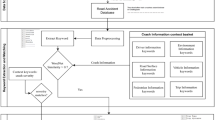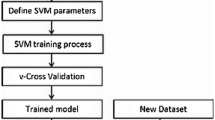Abstract
Crash severity analysis and prediction is a promising field in traffic safety. Various statistical methods have been used to model the severity of road crashes. However, machine learning algorithms have gained popularity in recent years. This study compares the predictive performance of various machine learning and statistical models, including prediction accuracy, and determines the influence of various variables on crash severity. The crash severity data were collected from a Hospital in Kashmir (India), an area with mixed topography. The crash severity levels (CSLs) were represented in the Glasgow Coma Scale (GCS). For estimations, the two statistical models, logistic regression (LR) and decision tree (DT), and four machine learning models, including random forest (RF), support vector machine (SVM), gradient boosted tree (GBT), and extreme gradient boosting (XG BOOST), have been used. The results show that the machine learning models have higher prediction accuracy than the statistical models. Among all, the GBT model has the best overall prediction accuracy, particularly in the prediction of individual CSLs while LR was found to have the least accuracy. The influence of variables on CSL was found from DT and GBT. Both models have indicated that ‘time’ as a variable was the most influencing, followed by the casualty class of pedestrians over the CSLs. The results also show that the variable influences over CSL were different from different models. Based on the influence of variables, certain policy implications are suggested, which might aid the transportation department, and other concerned departments to reduce the severity and number of road traffic crashes (RTCs).




Similar content being viewed by others
References
WHO, Road traffic injuries, 2021. https://www.who.int/news-room/fact-sheets/detail/road-traffic-injuries
World Bank, World Bank, 2021. https://blogs.worldbank.org/endpovertyinsouthasia/how-do-poor-cope-road-crashes-india
A Bosch Study, A Bosch Study, 2021. https://www.bosch-press.in/pressportal/in/en/press-release-4608.html
Deccan Herald, Road accident deaths three times more than militancy in Jammu and Kashmir|Deccan Herald, 2021. https://www.deccanherald.com/national/north-and-central/road-accident-deaths-three-times-more-than-militancy-in-jammu-and-kashmir-1065483.html
Greater Kashmir, J&K among top two states in road accidents,” 2018. https://www.greaterkashmir.com/kashmir/jk-among-top-two-states-in-road-accidents
H.T. Abdelwahab, M.A. Abdel-Aty, Development of artificial neural network models to predict driver injury severity in traffic accidents at signalized intersections. Transp. Res. Rec. 1746, 6–13 (2001). https://doi.org/10.3141/1746-02
A.T. Kashani, A. Shariat-Mohaymany, A. Ranjbari, A. Tavakoli Kashani, Data mining approach to identify key factors of traffic injury severity. Int. J. Inj. Control Safety Prom. (2022). https://doi.org/10.1080/17457300.2022.2089899
V.A. Olutayo, A.A. Eludire, Information technology and computer science. Inf. Technol. Comput. Sci. 02, 22–28 (2014). https://doi.org/10.5815/ijitcs.2014.02.03
G. Prati, L. Pietrantoni, F. Fraboni, Using data mining techniques to predict the severity of bicycle crashes. Accid. Anal. Prev. 101, 44–54 (2017). https://doi.org/10.1016/J.AAP.2017.01.008
L. Wahab, H. Jiang, A comparative study on machine learning based algorithms for prediction of motorcycle crash severity. PLoS one (2019). https://doi.org/10.1371/journal.pone.0214966
A. Shibata, K. Fukuda, Risk factors of fatality in motor vehicle traffic accidents. Accid. Anal. Prev. 26(3), 391–397 (1994). https://doi.org/10.1016/0001-4575(94)90013-2
M. Abrari Vajari, K. Aghabayk, M. Sadeghian, N. Shiwakoti, A multinomial logit model of motorcycle crash severity at Australian intersections. J Safety Res 73, 17–24 (2020). https://doi.org/10.1016/J.JSR.2020.02.008
V. Jalajakshi, A.N. Myna, Importance of statistics to data science. Glob. Trans. Proc. (2022). https://doi.org/10.1016/J.GLTP.2022.03.019
S. Kumar, I. Chong, Correlation analysis to identify the effective data in machine learning: Prediction of depressive disorder and emotion states. Int. J. Environ. Res. Public Health (2018). https://doi.org/10.3390/ijerph15122907
K. Santos, J.P. Dias, C. Amado, A literature review of machine learning algorithms for crash injury severity prediction. J. Safety Res. 80, 254–269 (2022). https://doi.org/10.1016/j.jsr.2021.12.007
F.L. Mannering, C.R. Bhat, Analytic methods in accident research: methodological frontier and future directions. Anal. Methods Accid. Res. 1, 1–22 (2014). https://doi.org/10.1016/J.AMAR.2013.09.001
M. Haghani, A. Behnood, V. Dixit, O. Oviedo-Trespalacios, Road safety research in the context of low- and middle-income countries: macro-scale literature analyses, trends, knowledge gaps and challenges. Saf. Sci. 146, 105513 (2022). https://doi.org/10.1016/J.SSCI.2021.105513
M.S. Ghanim, K. Shaaban, A case study for surrogate safety assessment model in predicting real-life conflicts. Arab. J. Sci. Eng. 44(5), 4225–4231 (2019). https://doi.org/10.1007/s13369-018-3326-8
Nursing Times, Forty years on: updating the Glasgow Coma Scale|Nursing Times, 2014. https://www.nursingtimes.net/clinical-archive/accident-and-emergency/forty-years-on-updating-the-glasgow-coma-scale-10-10-2014.
G. Teasdale, B. Jennett, Assessment of coma and impaired consciousness: a practical scale. Lancet 304(7872), 81–84 (1974). https://doi.org/10.1016/S0140-6736(74)91639-0
V. Gopinath, K. Purna Prakash, C. Yallamandha, G. Krishna Veni, D.S. Krishna Rao, Traffic accidents analysis with respect to road users using data mining techniques. Int. J. Emerg. Trends Technol. Comput. Sci. 6(3), 15–20 (2017)
J. Wang, B. Liu, T. Fu, S. Liu, J. Stipancic, Modeling when and where a secondary accident occurs. Accid. Anal. Prev. 130, 160–166 (2019). https://doi.org/10.1016/J.AAP.2018.01.024
A. Ahmadi, A. Jahangiri, V. Berardi, S.G. Machiani, Crash severity analysis of rear-end crashes in California using statistical and machine learning classification methods. J. Transp. Saf. Secur. 12(4), 522–546 (2020). https://doi.org/10.1080/19439962.2018.1505793
F. Jiang, K.K.R. Yuen, E.W.M. Lee, Analysis of motorcycle accidents using association rule mining-based framework with parameter optimization and GIS technology. J. Safety Res. 75, 292–309 (2020). https://doi.org/10.1016/j.jsr.2020.09.004
Z. Sun, Y. Xing, J. Wang, X. Gu, H. Lu, Y. Chen, Exploring injury severity of vulnerable road user involved crashes across seasons: a hybrid method integrating random parameter logit model and Bayesian network. Saf. Sci. 150, 105682 (2022). https://doi.org/10.1016/J.SSCI.2022.105682
M. Mohanty et al., Development of crash prediction models by assessing the role of perpetrators and victims: a comparison of ANN & logistic model using historical crash data. Int. J. Inj. Contr. Saf. Promot (2022). https://doi.org/10.1080/17457300.2022.2089899
Z. Yang, W. Zhang, J. Feng, Predicting multiple types of traffic accident severity with explanations: a multi-task deep learning framework. Saf. Sci. (2022). https://doi.org/10.1016/j.ssci.2021.105522
J.K. Kim, G.F. Ulfarsson, S. Kim, V.N. Shankar, Driver-injury severity in single-vehicle crashes in California: a mixed logit analysis of heterogeneity due to age and gender. Accid. Anal. Prev. 50, 1073–1081 (2013). https://doi.org/10.1016/J.AAP.2012.08.011
S. Regev, J.J. Rolison, S. Moutari, Crash risk by driver age, gender, and time of day using a new exposure methodology. J. Safety Res. 66, 131–140 (2018). https://doi.org/10.1016/J.JSR.2018.07.002
S. Islam, F. Mannering, Driver aging and its effect on male and female single-vehicle accident injuries: some additional evidence. J. Safety Res. 37(3), 267–276 (2006). https://doi.org/10.1016/J.JSR.2006.04.003
S. Alghnam et al., The association between mobile phone use and severe traffic injuries: a case-control study from Saudi Arabia. Int. J.Environ. Res. Pub. Health (2019). https://doi.org/10.3390/ijerph16152706
J. Lee, J. Yeo, I. Yun, S. Kang, Q. Zeng, Factors affecting crash involvement of commercial vehicle drivers: evaluation of commercial vehicle drivers’ characteristics in South Korea. J. Adv. Transp. (2020). https://doi.org/10.1155/2020/5868379
J. Andrey, B. Mills, M. Leahy, J. Suggett, Weather as a chronic hazard for road transportation in Canadian cities. Nat. Hazards 28(2–3), 319–343 (2003). https://doi.org/10.1023/A:1022934225431
J. Berkson, Application of the logistic function to bio-assay. J. Am. Stat. Assoc. 39(227), 357–365 (1944). https://doi.org/10.1080/01621459.1944.10500699
Handbook of Statistics, Wang and Stolfo, 2003. https://www.sciencedirect.com/topics/mathematics/support-vector-machines
Friedman, Greedy function approximation: a gradient boosting machine on JSTOR. 2001. https://www.jstor.org/stable/2699986
M. Ijaz, M. Zahid, A. Jamal, A comparative study of machine learning classifiers for injury severity prediction of crashes involving three-wheeled motorized rickshaw. Accid. Anal. Prev. 154, 106094 (2021). https://doi.org/10.1016/J.AAP.2021.106094
B. Jennett, The glasgow coma scale: history and current practice. Trauma 4(2), 91–103 (2002). https://doi.org/10.1191/1460408602ta233oa
K. Assi, S.M. Rahman, U. Mansoor, N. Ratrout, Predicting crash injury severity with machine learning algorithm synergized with clustering technique: a promising protocol. Int. J. Environ. Res. Public Health 17(15), 1–17 (2020). https://doi.org/10.3390/ijerph17155497
S. Siegrist, Towards a method to forecast the effectiveness of national road safety programmes. Saf. Sci. 48(9), 1106–1110 (2010). https://doi.org/10.1016/J.SSCI.2009.11.007
P. Misra et al., Epidemiological study of patients of road traffic injuries attending emergency department of a trauma center in New Delhi. Indian J. Crit. Care Med. 21(10), 678–683 (2017). https://doi.org/10.4103/ijccm.IJCCM_197_17
R. Goel, P. Jain, G. Tiwari, Correlates of fatality risk of vulnerable road users in Delhi. Accid. Anal. Prev. 111(August 2017), 86–93 (2018). https://doi.org/10.1016/j.aap.2017.11.023
J.-L. Martin, A. Lardy, and B. Laumon, Pedestrian Injury Patterns According to Car and Casualty Characteristics in France in annals of advances in automotive medicine/annual scientific conference, 55, 137–146. https://www.ncbi.nlm.nih.gov/pmc/articles/PMC3256841/
Y. Zhang, J. Bigham, D. Ragland, X. Chen, Investigating the associations between road network structure and non-motorist accidents. J. Transp. Geogr. 42, 34–47 (2015). https://doi.org/10.1016/j.jtrangeo.2014.10.010
Acknowledgements
The authors would like to thank and acknowledge the Transportation Engineering and Planning (TE&P) Division, institute administration, and Civil Engineering Department at National Institute of Technology (NIT) Srinagar for providing the necessary facilities and support for this research.
Funding
This paper presents part of the research work carried out by the authors based on the grant received from the Ministry of Human Resource Development (MHRD), Government of India.
Author information
Authors and Affiliations
Corresponding author
Ethics declarations
Conflict of interest
The authors have not disclosed any competing interests.
Additional information
Publisher's Note
Springer Nature remains neutral with regard to jurisdictional claims in published maps and institutional affiliations.
Rights and permissions
Springer Nature or its licensor (e.g. a society or other partner) holds exclusive rights to this article under a publishing agreement with the author(s) or other rightsholder(s); author self-archiving of the accepted manuscript version of this article is solely governed by the terms of such publishing agreement and applicable law.
About this article
Cite this article
Nazir, M., Illahi, U., Gurjar, J. et al. Traffic Crash Severity: Comparing the Predictive Performance of Popular Statistical and Machine Learning Models Using the Glasgow Coma Scale. J. Inst. Eng. India Ser. A 104, 435–446 (2023). https://doi.org/10.1007/s40030-023-00710-3
Received:
Accepted:
Published:
Issue Date:
DOI: https://doi.org/10.1007/s40030-023-00710-3




